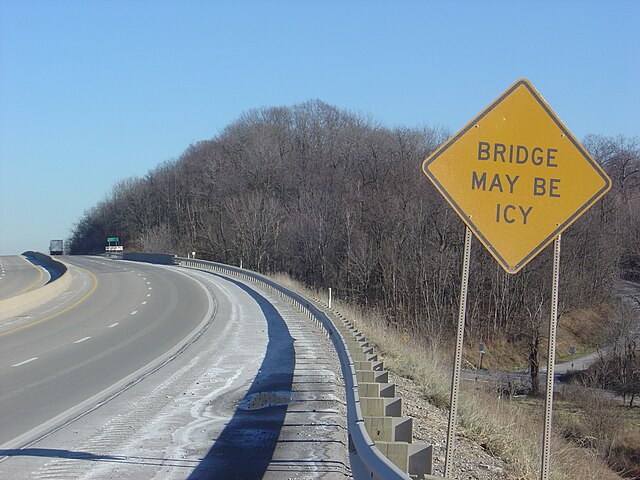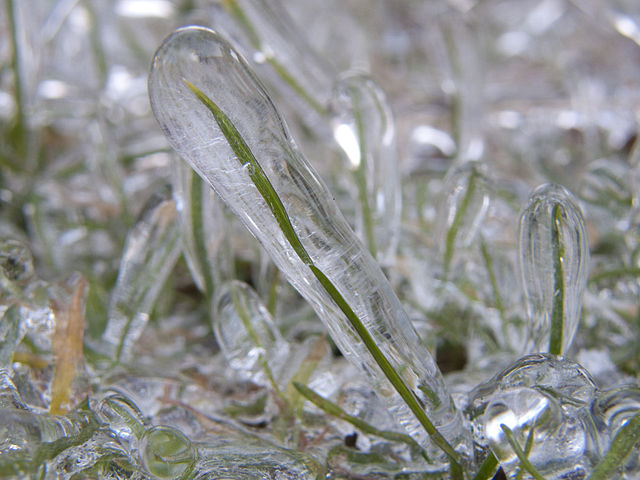Black ice, sometimes called clear ice, is a thin coating of glaze ice on a surface, especially on streets. The ice itself is not black, but visually transparent, allowing the often black road below to be seen through it. The typically low levels of noticeable ice pellets, snow, or sleet surrounding black ice means that areas of the ice are often next to invisible to drivers or people walking on it. Thus, there is a risk of slippage and subsequent accident due to the unexpected loss of traction.
Black ice on a road in Germany
Warning sign for icy pavement in Quebec, Canada
Warning sign for bridge on US highway
The I-35W Mississippi River bridge seen from below in 2006
Glaze or glaze ice, also called glazed frost or verglas, is a smooth, transparent and homogeneous ice coating occurring when freezing rain or drizzle hits a surface. It is similar in appearance to clear ice, which forms from supercooled water droplets. It is a relatively common occurrence in temperate climates in the winter when precipitation forms in warm air aloft and falls into below-freezing temperature at the surface.
Glaze on a blade of grass
Glazed tree branches are noted for both their beauty and their tendency to snap
Branch fully encapsulated in glaze
A forest in Moscow a week after an incident of freezing rain








